SOE’s ‘virtual reality’ resistance movement
Document of the month: FO 898/28
Guy Woodward investigates a fictional Balkan resistance movement, and ponders the parallels between propaganda work and writing fiction
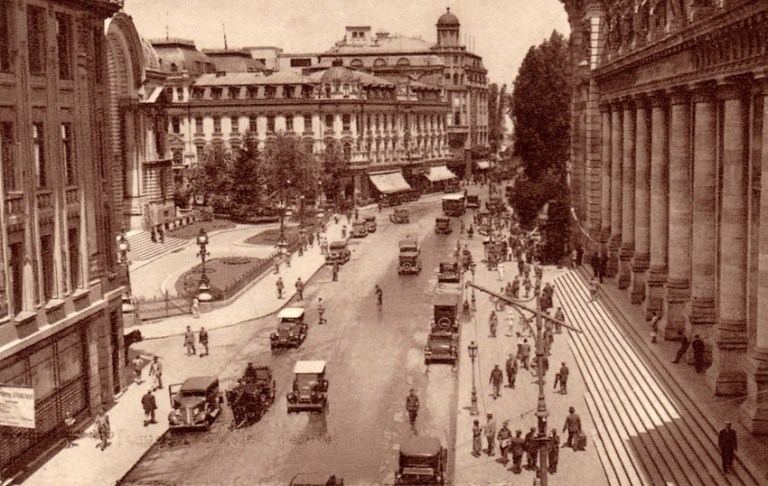
There’s an intriguing paragraph in Bickham Sweet-Escott’s SOE memoir Baker Street Irregular (1965) in which he recalls that around 1942 ‘though no resistance movement existed in Rumania, we and P.W.E. […] invented a Rumanian Mihailović called Vlaicu, whose exploits were broadcast on the radio to Rumania, and we had evidence that our invention caused confusion and concern in Bucharest.’[1]
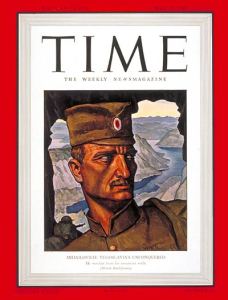
General Mihailović was leader of the royalist Chetnik guerrilla resistance forces in occupied Yugoslavia, whose exploits had been amplified by Allied propaganda across the globe: he appeared on the cover of Time magazine (above) and featured as the hero of swashbuckling Hollywood films (in 1943 Britain switched support from Mihailović to Tito’s Communist Partisans). As Sweet-Escott observes, no comparable movement could be found in Axis-aligned Romania – Dennis Deletant suggests that reluctance in Romania to organise resistance against autocratic leader Marshal Antonescu or his German allies is explained in part by the threat posed by the Soviet Union at this time: Romania and Germany were fighting together on the Eastern Front and had successfully recaptured Romanian territories occupied by the USSR in 1940.[2]
The Balkan state was certainly the focus of several clandestine British operations in the early stages of the war; various plans were hatched to block the Danube in the north west of the country, thereby preventing the export of oil and agricultural products on which, it was correctly predicted, Germany would depend.[3] British propagandists were also keen to destabilise the country, but as Ioannis Stefanidis notes, SO1 and PWE found that ‘British objectives were undercut by a powerful Russophobia’.[4]
Sweet-Escott does not elaborate on the Vlaicu campaign, but Stefanidis’s compelling book Substitute for Power: Wartime British Propaganda to the Balkans, 1939–44 (2012) features a fascinating account of its genesis. In June 1942 SOE’s Alfred de Chastelain and Edward Masterson decided to try to turn black propaganda into ‘a self-fulfilling prophecy’, by establishing a fictitious Romanian resistance movement over the airwaves, creating the impression of membership and activities through a campaign of coordinated broadcasts and stories planted in the press of neutral countries.[5] The pair optimistically hoped that after two months conditions would be established to set up a real organisation on the ground. Quoting from SOE documents, Stefanidis notes that:
SOE London objected that, even if Romanians were convinced of the group’s existence, they would not know ‘what to do or where to go’. The proponents of the scheme countered that if such ‘an efficient and active organisation’ existed, ‘it would not be necessary for us to create imaginary movements and leaders.’[6]
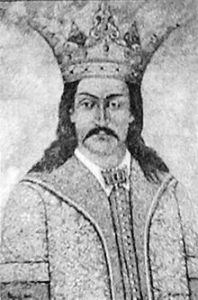
The radio station of the ‘Liberation Struggle’ began broadcasting from Jerusalem on 27 July 1942, and claimed to be the voice of a network of anti-German resistance groups, led by an imaginary figure named ‘Vlaicu’ – Stefanidis suggests that he was named after Vladislav 1 (right), a revered fourteenth-century ruler of Wallachia in present-day Romania (Aurel Vlaicu, the pioneering early-twentieth-century aviator and Romanian national hero, is another possible source for the name).[7] Broadcasts criticised Romanian support for Germany but also gave ‘instructions’ to imaginary resistance cells in the country.
Stories about ‘Vlaicu’ were planted in newspapers in Portugal, Sweden and Switzerland, and by October 1942 references to movement had appeared on the BBC and in the London Times.[8] One hundred thousand leaflets were dropped on Romania addressed to the fictional movement and promising support. Although these interventions apparently prompted the Romanian security services into conducting a search for the non-existent organisation, SOE’s initial optimism was not reflected on the ground, and by August 1943 a report confirmed that Vlaicu remained a ‘virtual reality’.[9]
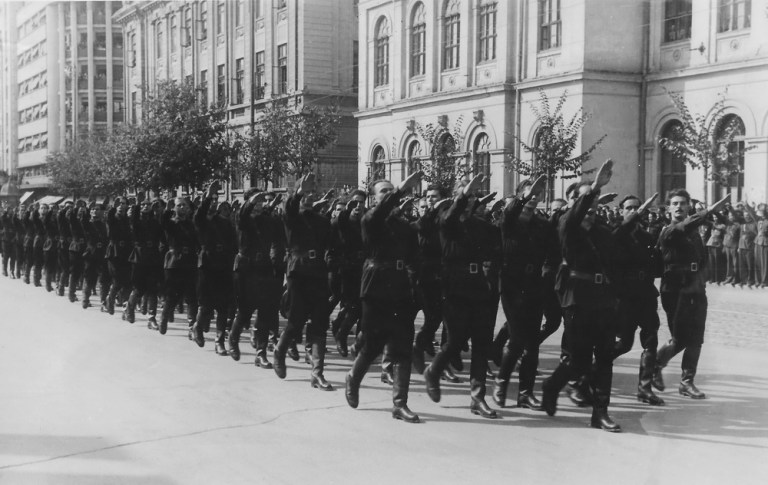
Deletant adds to the story, identifying the station’s ‘most vigorous contributors’ as George Beza and Petru Vulpescu.[10] Beza had founded a small peasant group in Romania in 1936-7 to break up meetings of the fascist Iron Guard (above); he and Vulpescu had volunteered their services to SOE in Bucharest and were sent to Palestine to man the radio station.[11] Deletant’s account also extends the story to 1944: he suggests that the Vlaicu operation caused ‘embarrassment’ to the Antonescu regime, and led to ‘the arrest of several collaborators by the Romanian authorities in July 1944.’[12]
Documents in the PWE papers show that PWE and SOE coordinated the broadcast of Vlaicu in line with wider propaganda objectives; PWE also appear to have granted SOE the space to transmit broadcasts from Palestine.[13] A report produced for PWE’s Director General R. H. Bruce Lockhart and dated 30 November 1942 described the station as
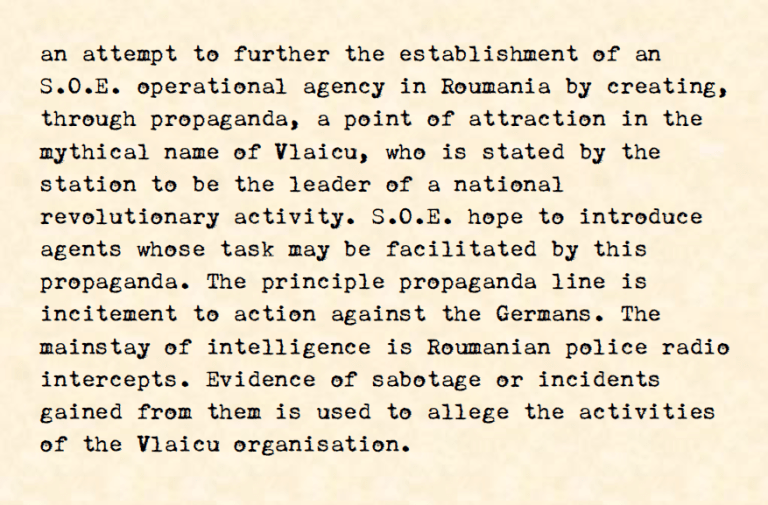
The report notes that a proportion of the scripts for the station were written in Cairo by an SOE operational officer.[14] At a meeting to discuss SOE-PWE coordination a few days later it was established that the Vlaicu project would continue either ‘until it had achieved its object or until S.O.E. had formed a genuine party of collaborators inside Rumania’ – in which case the station would rally to them and become their mouthpiece.[15]
The extent to which the station was a credible fake can be gauged from a report by the Istanbul Monitoring Unit dated 23 October 1943, which suggests that it sounds ‘as if it comes from Russia’, however ‘The news it gives is not recent, & thus it can be deducted that the station must be somewhere out of Roumania.’[16] As happened on several occasions during the war, one arm of the British state succeeded in fooling another arm.
Maintaining the pretence of broadcasting from inside an occupied territory was extremely difficult, as PWE’s official historian (and later novelist) David Garnett emphasises in his account of the establishment of so-called ‘Freedom Stations’:
Almost inevitably mistakes are made and suspicion begins to be aroused that the broadcasts are not what they appear. As an instrument of subversive propaganda secret broadcasting of this kind is a most potent weapon. So long as the audience believes that the station is operating secretly in its midst, its existence is a symbol of resistance. The Freedom Station is a subject about which thrilling speculations and rumours are perpetually rife; its listeners tend to regard themselves as initiates; to be indulgent and uncritical and they are likely to identify themselves with the views expressed, for Resistance is psychologically infectious.[17]
Sadly the PWE papers contain no further details of how Vlaicu was brought to fruition, or of how the mythical figure, his movement and its activities were imagined and represented over the airwaves. For our project however, which examines the relationship between the PWE, covert propaganda and British culture, the Vlaicu campaign raises important questions regarding the parallels and connections between propaganda work and the practice of writing.
This is not a new topic: Mark Wollaeger suggests that propagandists and modernist writers both strove ‘to make meaning effective through ambiguity’; Gayatri Spivak meanwhile makes the chilling observation that literature makes good propaganda because it ‘buys your assent in an almost clandestine way’.[18] The parallels and connections may explain why so many writers were employed for propaganda work during the war (we might think of Noel Coward, Graham Greene, or Freya Stark); or indeed why others who had worked in the field became writers (Muriel Spark, for example). More specifically however, SOE’s invention here of a movement under the leadership of an invented leader, yet within a heavily defined geographical and political environment, clearly invites comparisons with the practice of writing realist fiction – of devising plot lines and creating characters, within the constraints of needing to ensure the faithful representation of actually existing locations or credible modes of behaviour.
As Tim Brooks has observed, wartime propagandists were by no means free agents – their output had to correlate with British and later Allied war aims and policy, and they were required to liaise with other bodies to ensure that this was adhered to, as shown here by the coordination between PWE and SOE.[19] This requirement to coordinate, and to work within an overall plan, was eloquently outlined by the first executive head of PWE, Rex Leeper, in a report on black propaganda written in July 1942 which – with a few adjustments – could surely be applied to the business of plotting and constructing a novel.[20]
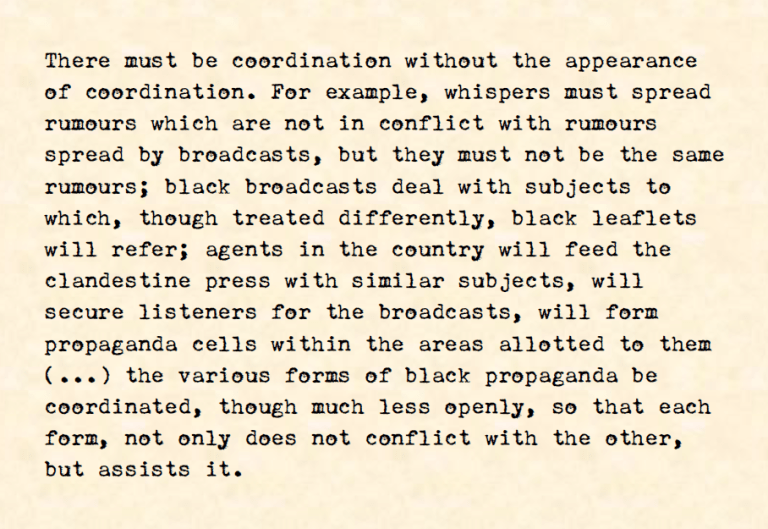
All archival material is Crown Copyright and is held in The National Archives. Quotations which appear here have been transcribed by members of the project team.
Notes
[1] Bickham Sweet-Escott, Baker Street Irregular (London: Methuen, 1965), pp. 194-5.
[2] Dennis Deletant, British Clandestine Activities in Romania during the Second World War (Basingstoke: Palgrave Macmillan, 2016), p. 76.
[3] See, among other accounts: Hugh Dalton, The Fateful Years: Memoirs 1931-1945 (London: Frederick Mueller Ltd, 1957), p. 375; Merlin Minshall, Guilt-Edged (London: Bachman & Turner, 1975), p. 76; Basil Davidson, Special Operations Europe: Scenes from the Anti-Nazi War (London: Grafton Books, 1987; orig. pub. 1980), p. 79; Andrew Lycett, Ian Fleming (London: Weidenfeld & Nicolson, 1995), p. 108;
[4] Ioannis Stefanidis, Substitute for Power: Wartime British Propaganda to the Balkans, 1939-44 (Farnham and Burlington, VT: Ashgate, 2012), p. 51.
[5] Stefanidis, p. 154.
[6] Ibid.
[7] Ibid.
[8] Ibid.
[9] Stefanidis, p. 155.
[10] Deletant, p. 98.
[11] Deletant, p. 207.
[12] Deletant, p. 98.
[13] FO 898/28.
[14] Ibid.
[15] FO 898/28.
[16] FO 898/52.
[17] David Garnett, The Secret History of PWE: The Political Warfare Executive 1939-1945 (London: St Ermin’s Press, 2002), pp. 32-3.
[18] Mark Wollaeger, Modernism, Media, and Propaganda: British Narrative From 1900 to 1945 (Princeton and Oxford: Princeton University Press, 2006), x; cited Wollaeger, p. 112.
[19] Tim Brooks, British Propaganda to France, 1940-1944: Machinery, Method and Message (Edinburgh University Press, 2007), p. 2.
[20] FO 898/63.
